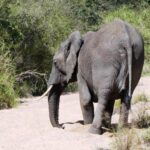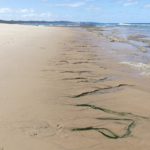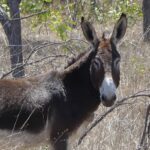The Hadzabe (plural of Hadza) natural environments are the escarpments and rocky, wooded hills that form the watersheds for Lake Eyasi and Yaeda Swamp in Tanzania. In this Rift Valley environment, seasonal rainfall changes and surface water availability from runoff and pooling significantly affect the annual rhythm of Hadza water sources and their life.
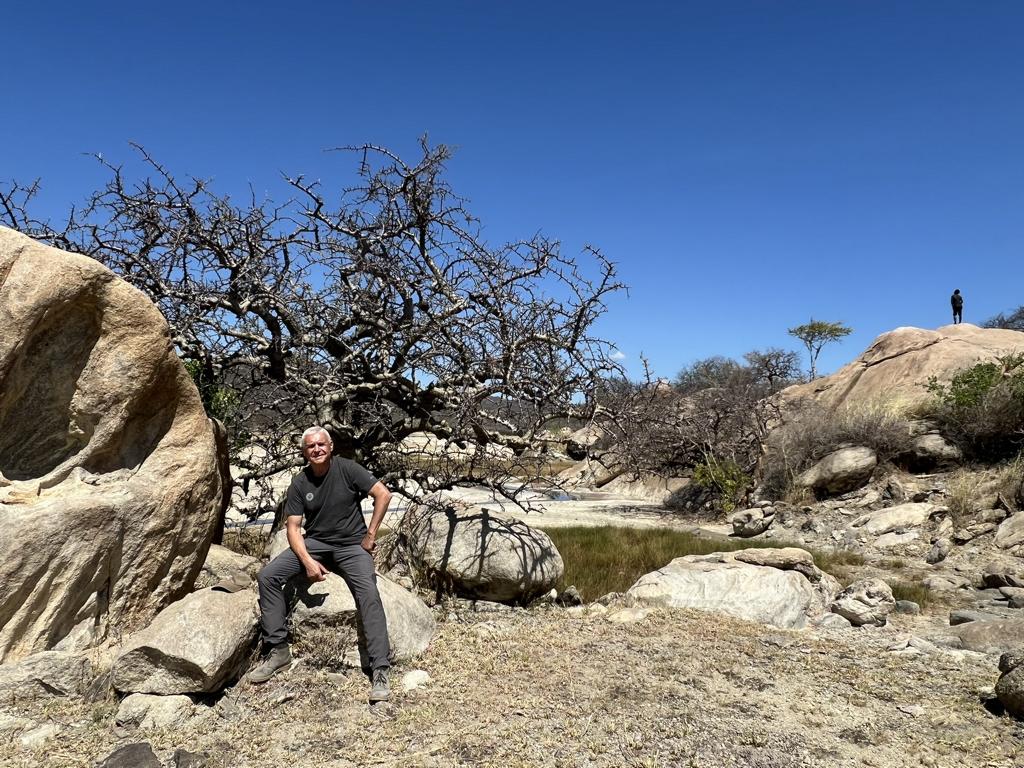
Hadza water sources are abundant during the annual rains from November to April and become increasingly scarce during the dry season from May to October, where September and October are the hottest months. These yearly wet/dry alternations determine how the Hadza people source and use the available water.
Hadzabe’s priorities for survival
When the author interviewed Mahiya, the Hadza clan leader, at Mkelengeko in the Yaeda area near Lake Eyasi in July 2024, he mentioned their survival priorities. The most important one was finding water. The next priority was obtaining food. The question could not be fully comprehended when asked about the necessity of shelter and fire. For Hadza men, carrying the fire stick (hand-drilling spindle) together with their arrows all the time is standard procedure. And shelters are not regarded as necessary, as makeshift shelters can be erected without much effort, and they prefer to sleep outside anyway. The most crucial issue for the Hadza people, still living the hunter-gatherer life, is obtaining water.
Running water from a creek
Our Hadza clan had the good fortune that a spring and a small creek formed in their area. This gave them a reliable water source for many months of the year. Besides providing potable water, this spring and creek were also perfect attractions for wild game that could be hunted there. Outside the vicinity of this small creek, our Hadza clan also used other water sources.
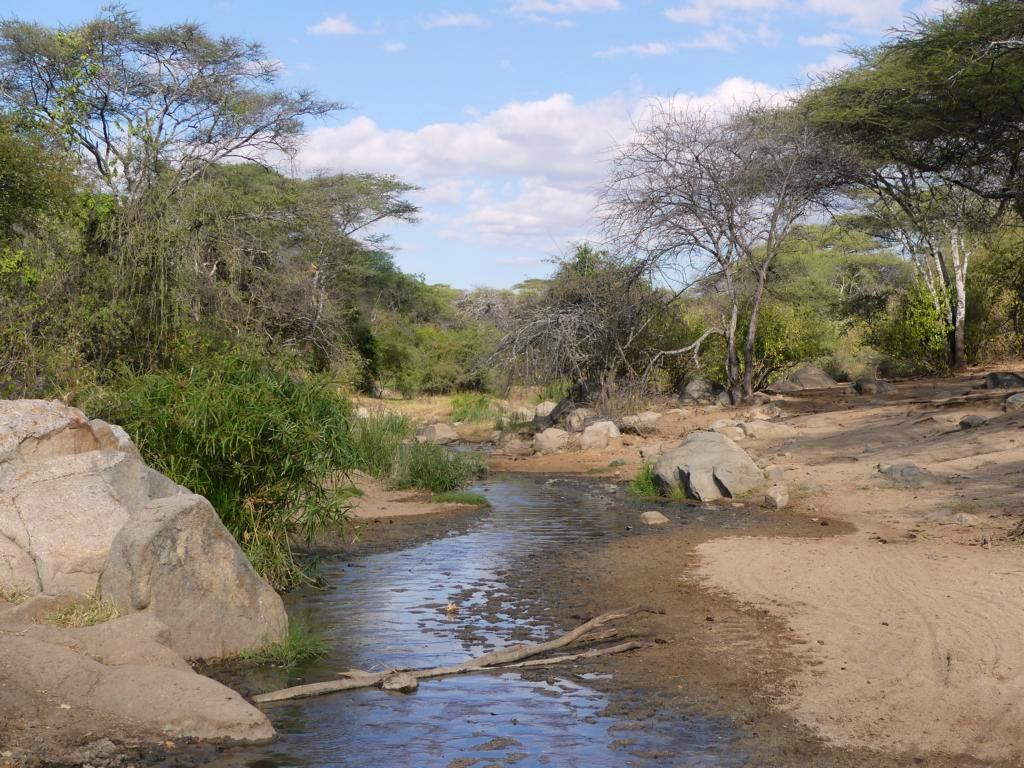
Before going into the details of these alternative sources, it must be mentioned that our Hadzabe did not take water with them when hunting or foraging, even for long hours during the day’s heat. They were just not concerned about water and did not drink anything. If they had been thirsty, they would have known precisely from which rock crevice or other place they could obtain water. Only once during our stay, when two old Hadza men visited our camp after hunting, did each drink half a liter of the offered water in one gulp.
Stagnant surface water
Hadzbe people drink water from shallow rock pools when running water from the creek is unavailable. Loamy soil or clay could not be seen in the vicinity; all the soil was either lateritic or sandy. Therefore, water pools on rocks (lomo’obi) are the primary source of stagnant water.
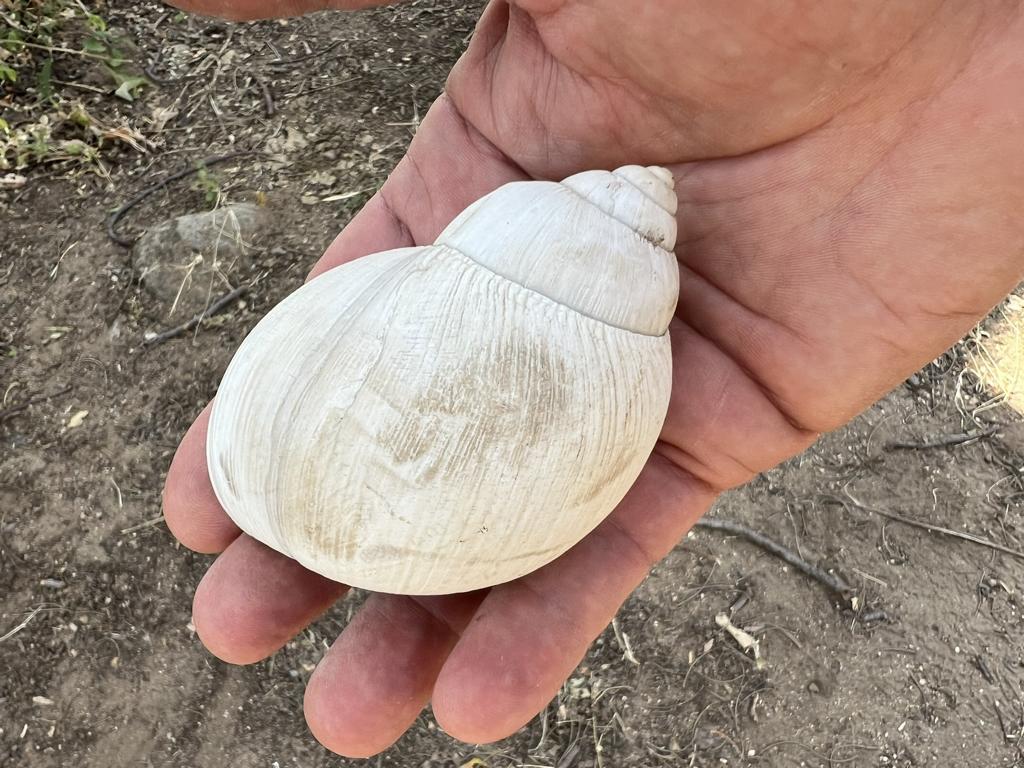
Often, shells of land snails will be used for drinking from these rock pools. The Hadza name for the snail shell is K’wa’uko ma n/alaka.
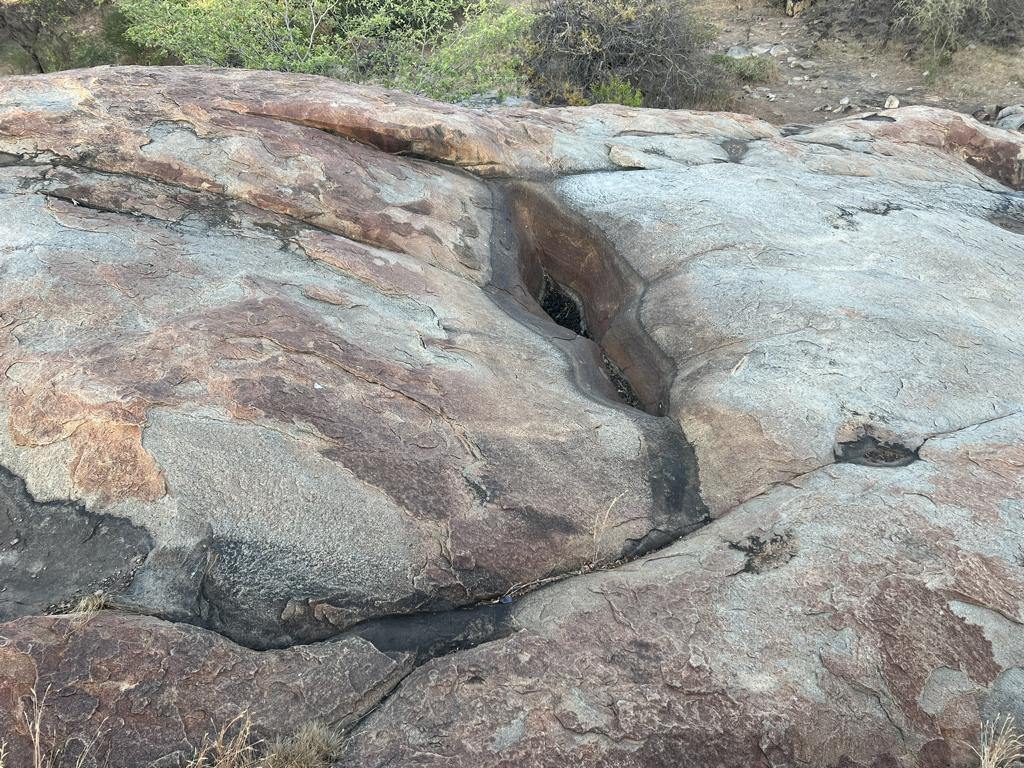
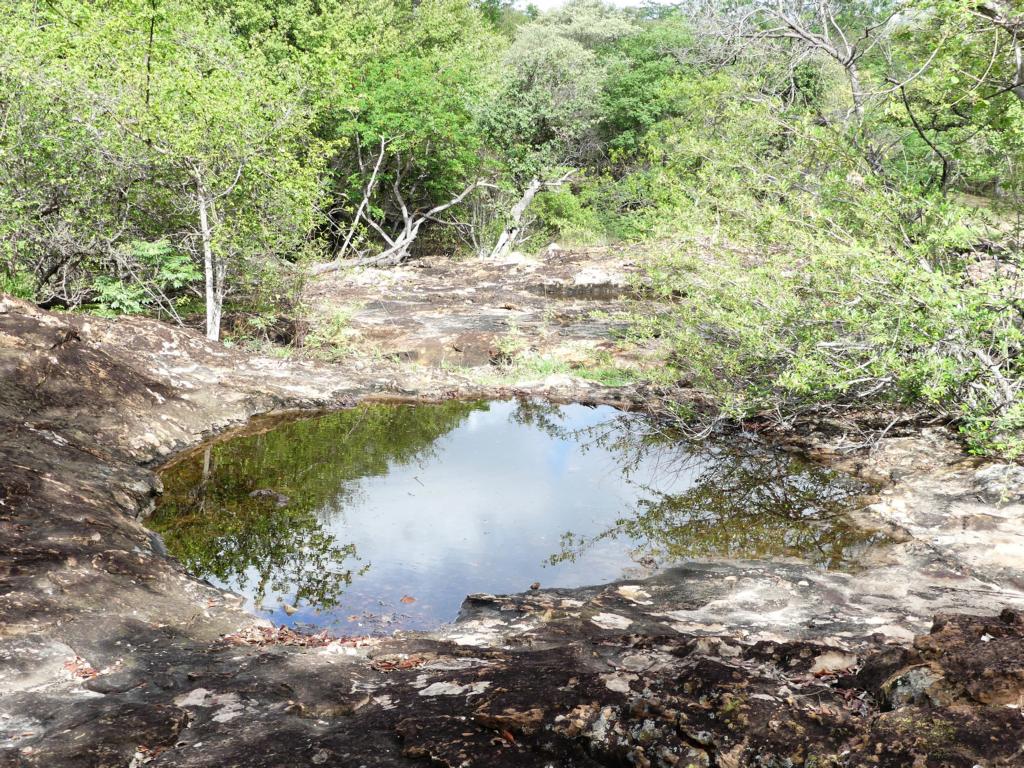
The biggest problem with water from such rock pools in Eastern and Southern African environments is the contamination by baboon feces. Both Olive- and Chacma baboons like to poo into these water puddles so that no other mammals (including humans) will drink from them.
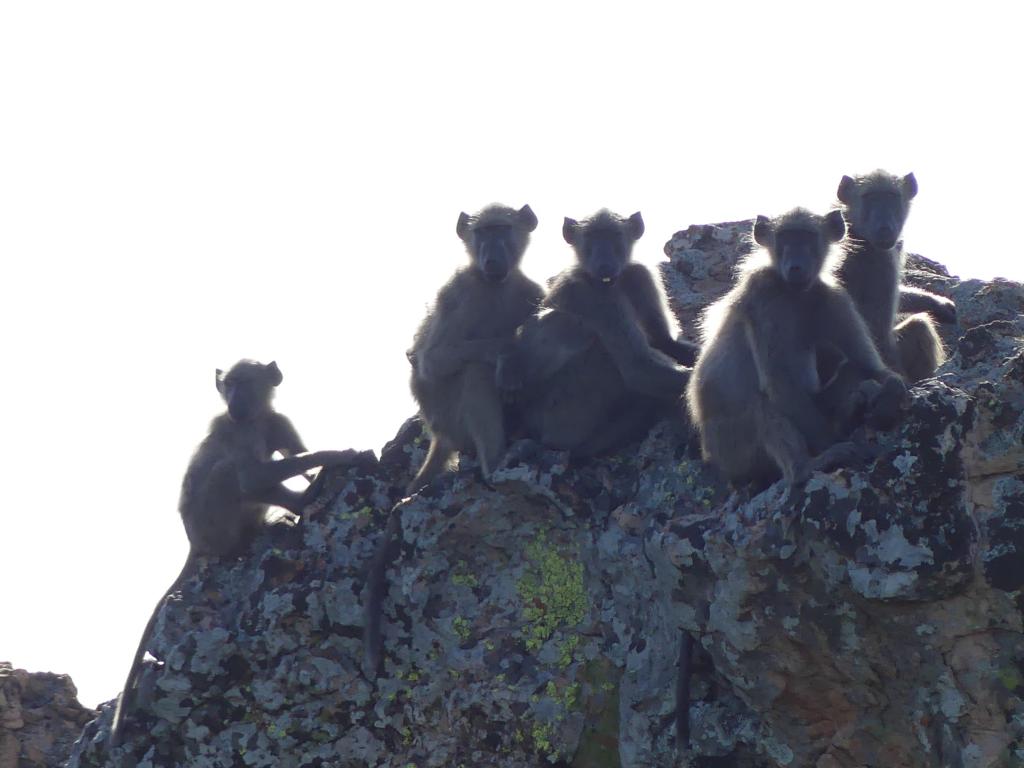
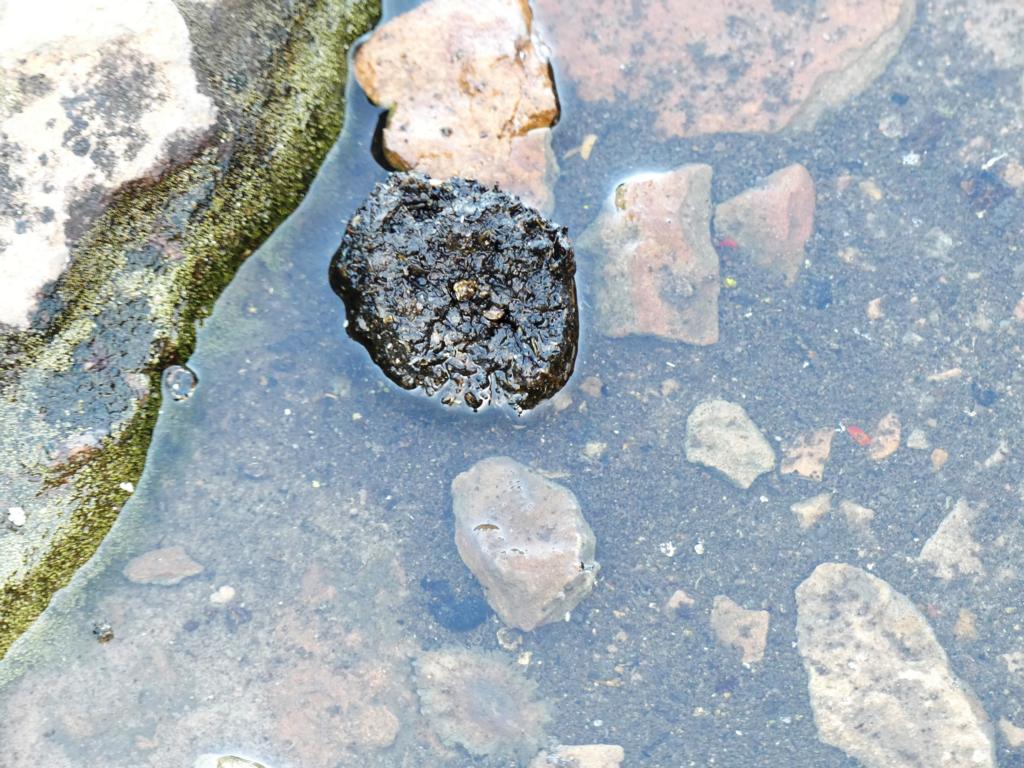
But our Hadzba people told us that they are not concerned by baboon poo at all. They remove the feces by hand from the water and drink without further treatment. No boiling, drip filter, or other purifying procedure will be applied. And – according to them – they do not experience any health problems from that (contaminated) water at all.
Water from Baobab trees
Next to the Hadzabe liking is procuring water from Baobab trees. A freshly felled baobab trunk weighs about 850 kg/m³ / 53 lb/ft³. Once dried out, it weighs 200 kg/m³ / 12.5 lb/ft³. Baobabs can store 650 liters / 172 US gal (US) of water per m³ wooden tree volume. The tree, therefore, consists of 76% water stored in the spongy sapwood. But Hadzbe people do not squeeze water from the spongy wood or young Baobab saplings.
They utilize surface water stored either inside the (often) hollow trunk, on top of the trunk, or in hollow axles of branches. To acquire the water from the holes in the tree, Hadza people use the cleaned half shell of a Baobab fruit without seeds and add a handle. This final assembled tool looks like a big dipper called Hlok’oko bei them.
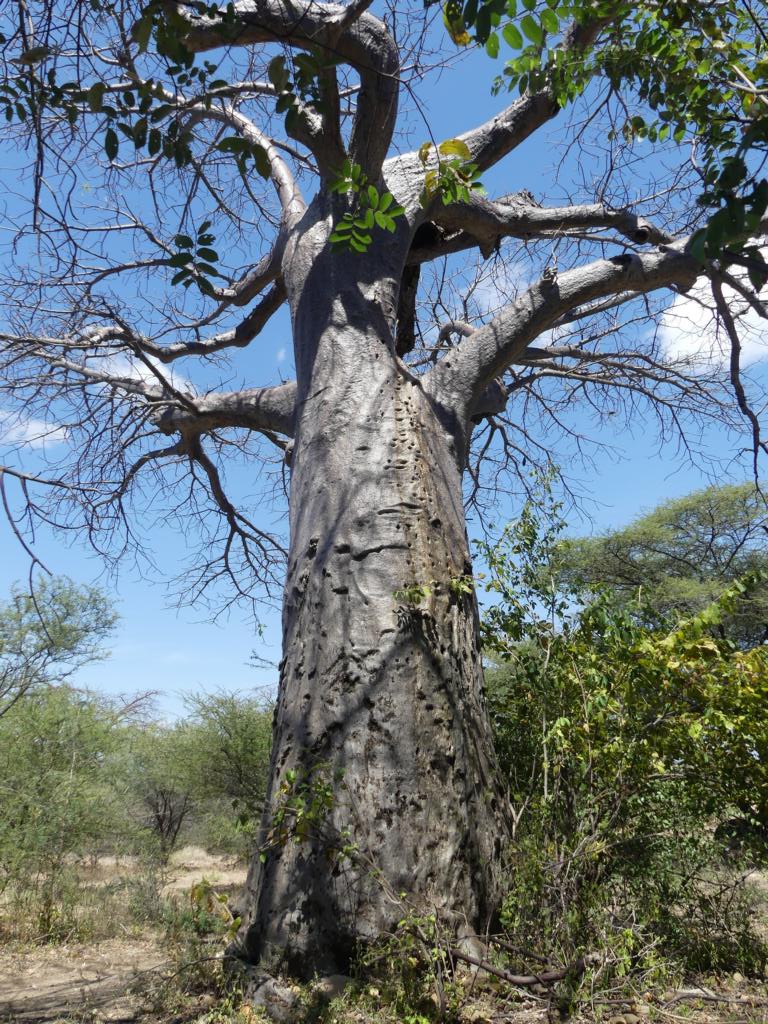
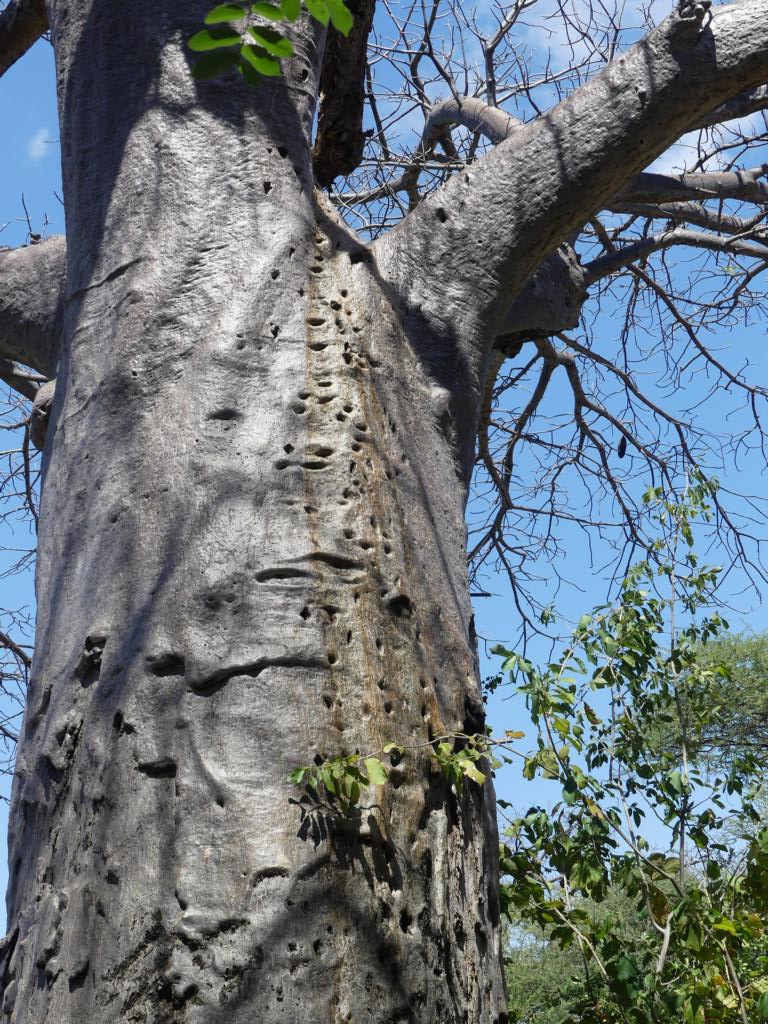
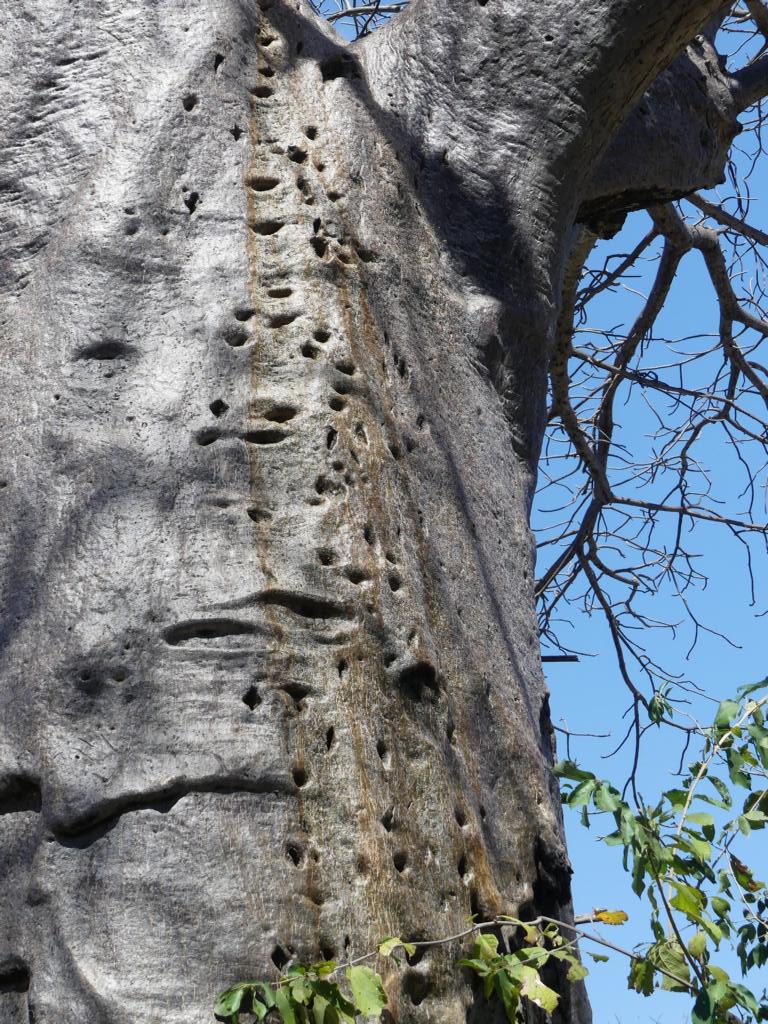
Younger Baobab trees normally have no hollow trunk, but they store water in natural cisterns at the top of the trunk (Hadza: Kesati). In the above pictures, water from the top overflows the bark, visible by the yellowish stripes along the length of the trunk. The Hadza people utilized this water storage by climbing to the top on a peg ladder.
Water from roots and tubers
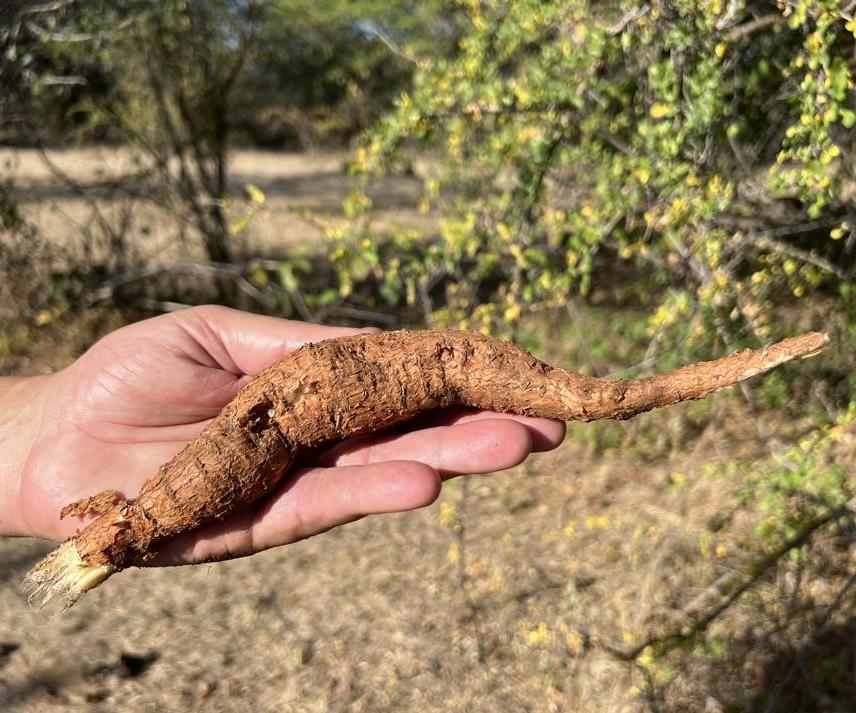
In emergencies, Hadza water sources include tubers from liana plants. All Vigna sp. roots contain a high amount of water. The raw roots are peeled and chewed, and the remaining fiber is spat. For a description of Vigna frutescens, see this article on this website.
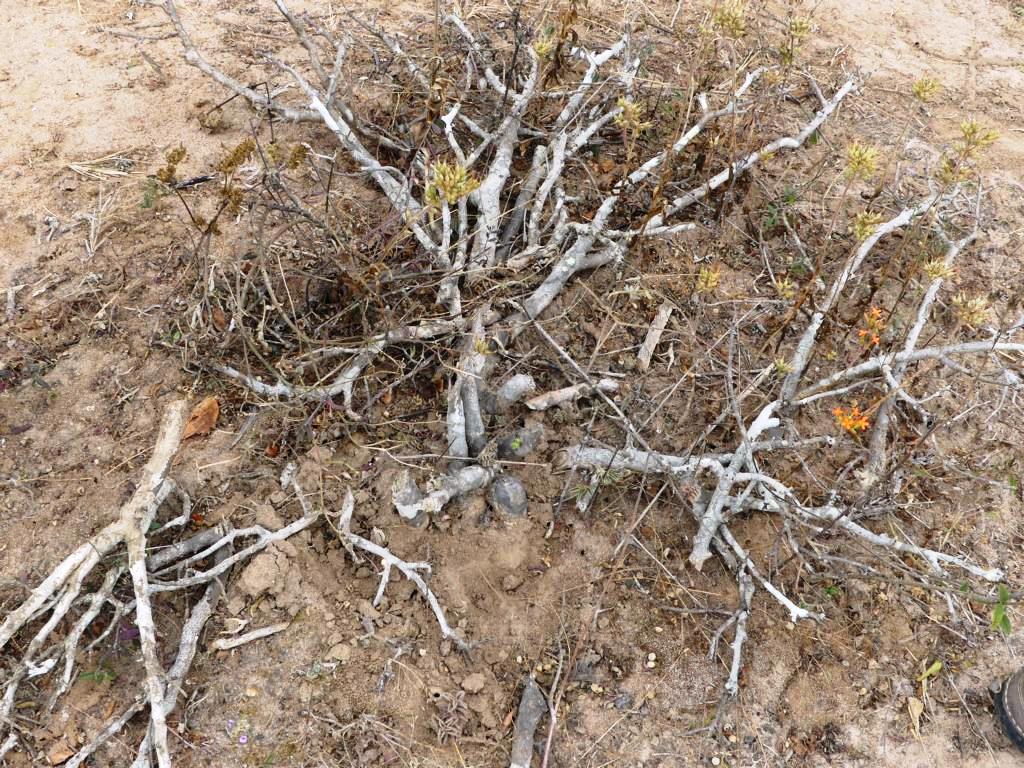
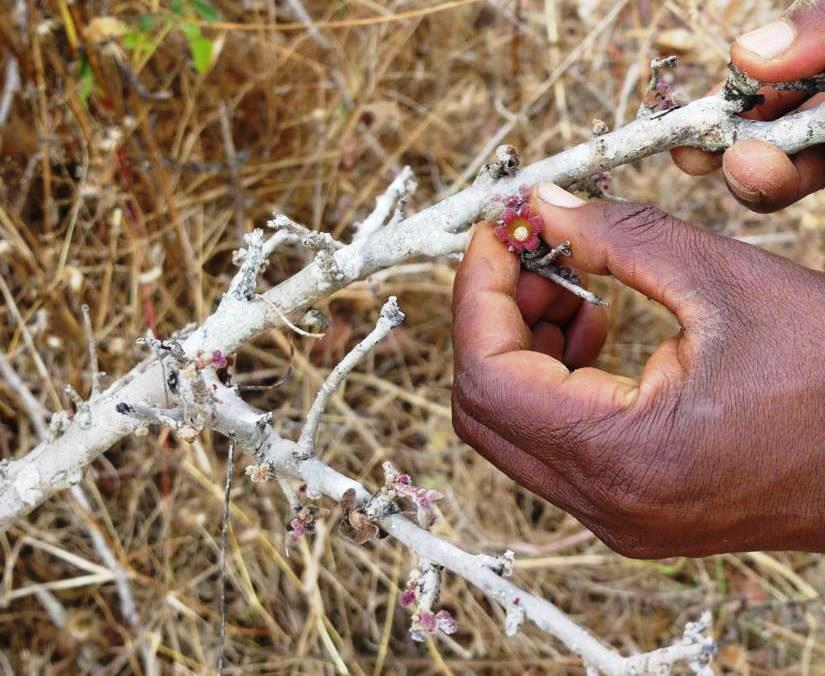
In times of severe water scarcity, the swollen roots of a species of Star Chestnut (Sterculia sp.) shrubs are dug up and chewed. The above figure shows the flower of this shrub to identify the plant. Underground tubers can be detected by knocking on the hard soil around the shrub. A lighter-sounding tone can be heard where the tubers are located.
Digging water wells
On Hadza communal land, the Datoga tribe can graze their livestock from July 1st to December 31st each year. From July to October, there is a severe water shortage for their goats and cattle, and they dig wells in prospective areas to water them. These wells are up to 1.5m deep and relatively narrow. Not to compare with the wide, conical wells in the sands of Southern African dry riverbeds.
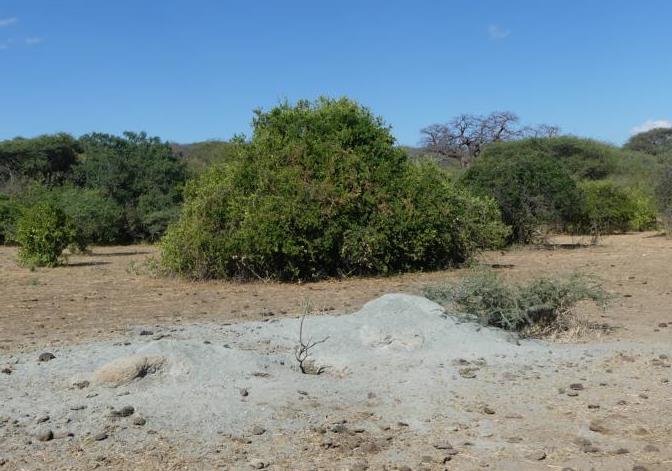
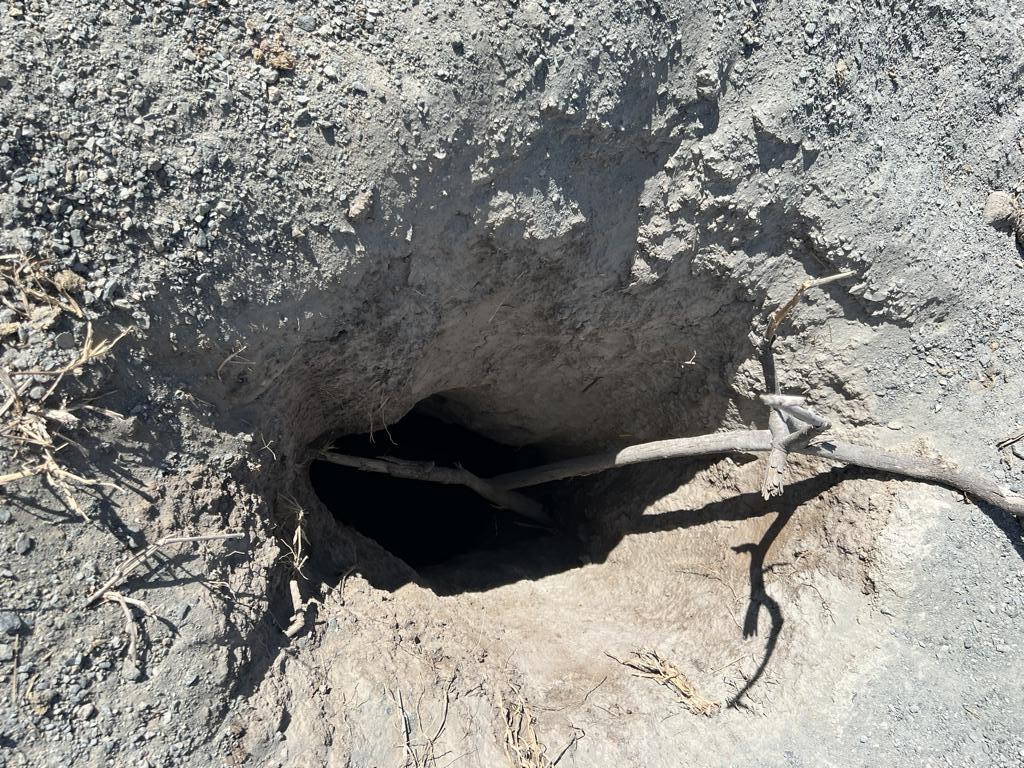
Hadza people sometimes utilize these wells to obtain the required water if all other sources run dry. This is one possible way for them to get water. However, they would never dig wells themselves, as this would lower the water table. With a lower water table, wild game would move out of the area, reducing the Hadzabe’s chances of survival.
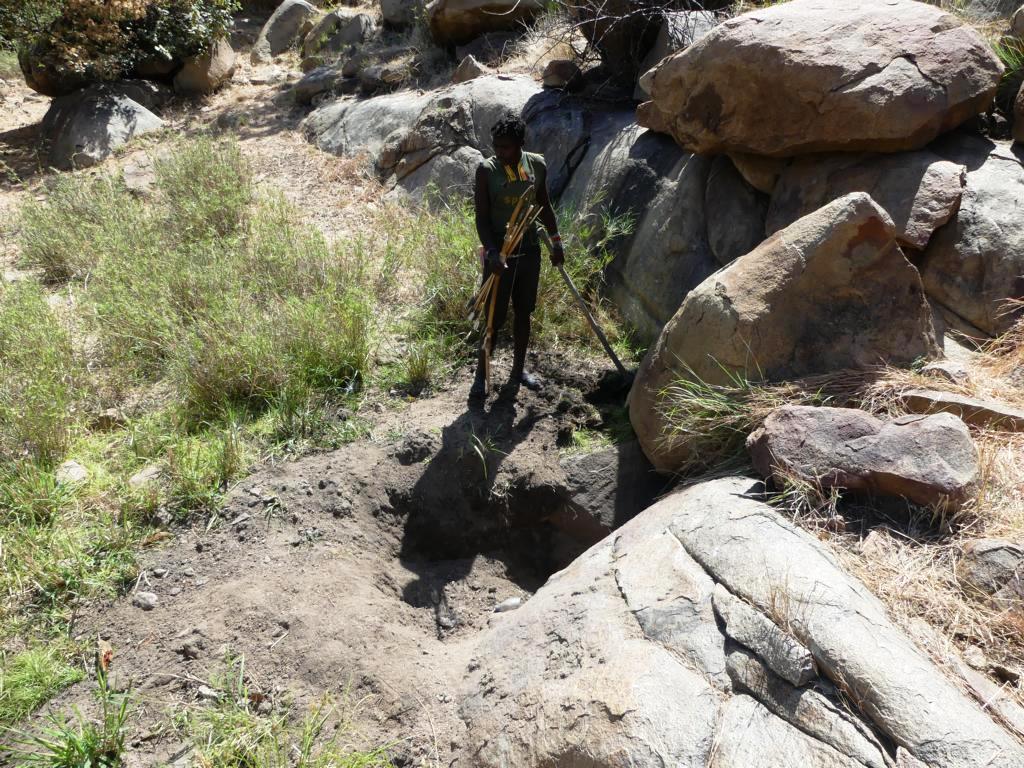
Lessons learned from Hadza water sources:
- The Hadza clan we visited had a spring and running water available in their area.
- They drink water from rock pools when the creek is drying up or is out of reach.
- Water collected in the hollows of Baobab trees is also a common source.
- Vigna sp. roots can be chewed and water extracted.
Additional information
My book ‘Hadzabe Survival Skills‘ offers more skills, knowledge, tools, and techniques for the Hadzabe people’s life in their natural environment. It is available on Amazon.com and Amazon’s regional websites.
.



